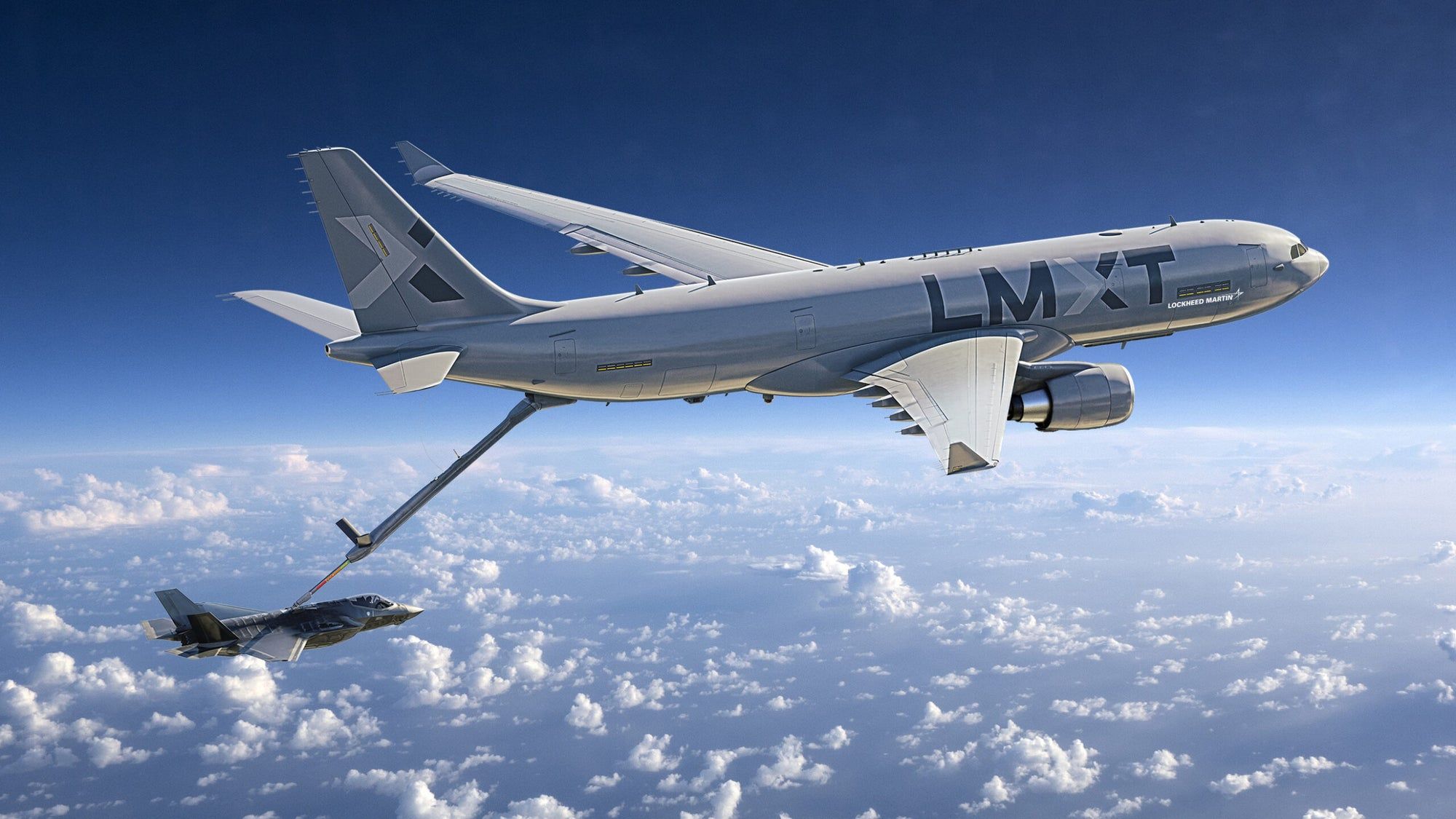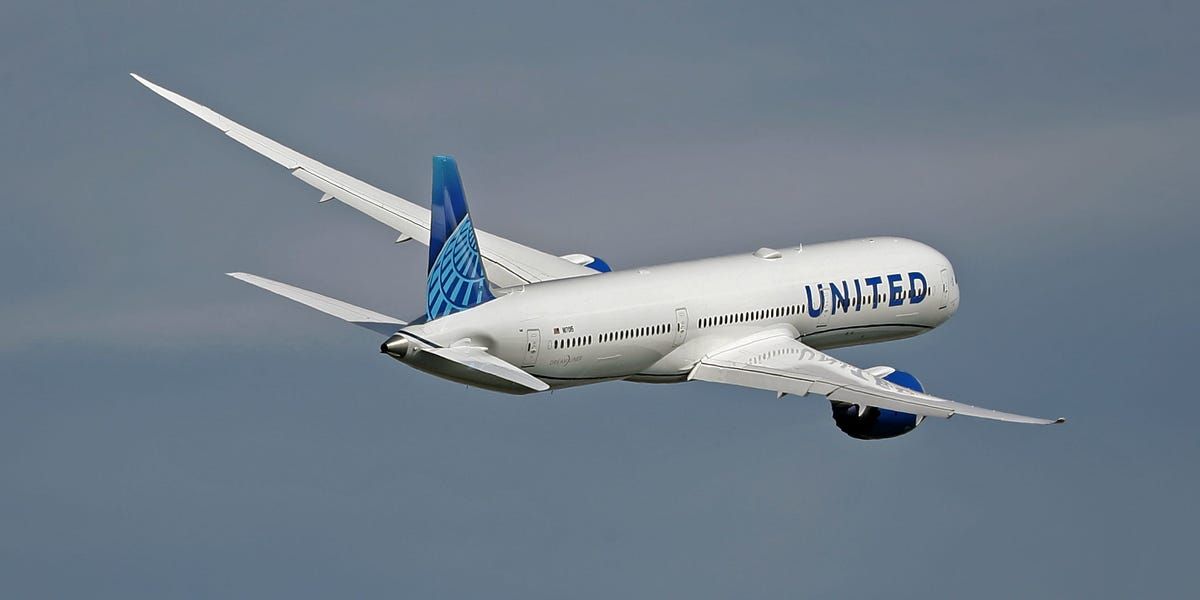Lockheed No Longer Looking To Offer Airbus A330 Tanker On Contract Basis
Lockheed Martin has abandoned plans to offer contract aerial refueling services using a version of the Airbus A330 Multi-Role Tanker Transport (MRTT). Teamed up with Airbus, Lockheed Martin had originally announced this possibility back in 2019, as part of a raft of different aerial refueling proposals, mainly pitched for the U.S. Air Force. The A330 MRTT aircraft was later rebranded as the LMXT in the specific configuration being offered to that service, although Lockheed has now determined there is no credible business case for it to offer contracted tankers to the U.S. Air Force or to any other customers.
While Lockheed Martin is no longer interested in providing contract tanker solutions, it is still trying to sell the LMXT to the Air Force to meet the requirements of the service's interim tanker acquisition plan, which is currently referred to as the KC-135 recapitalization effort. Despite the name, this is intended to allow for the Air Force to continue to replace its aging KC-135s and KC-10s as it moves toward a true next-generation design, although the scope of the program has been scaled back. The company also says it would still entertain interest from third-party private air refueling companies who might still want to pitch the LMXT or A330 MRTT to other customers under a contract model.
Lockheed Martin confirmed all this to The War Zone yesterday, in a press briefing attended by various journalists, during which the company announced the selection of GE Aerospace’s CF6-80E1 turbofan engine for the LMXT. The CF6-80E1 is already one of the established powerplant options available for the A330 MRTT.
Rated at 72,000 pounds thrust, the CF6-80E1A3 is the highest-thrust CF6 engine offered to date. GE Aerospace
Despite losing interest in offering its own contract tanker services, Lockheed Martin remains bullish about prospects for the LMXT with the Air Force.
As it stands, once the Air Force completes its planned purchase of 179 KC-46s — with the last of those aircraft scheduled to be delivered in 2029 — the service wants to immediately begin receiving what it had previously referred to as "bridge tankers." These additional refueling aircraft are expected to fill in between the end of its planned purchases of KC-46s and the acquisition of an advanced future aerial refueling aircraft.
At one stage, between 140 and 160 examples of the bridge tanker design were deemed likely to be acquired, although that number has since been roughly halved, to 75 aircraft. Between them, however, the additional tankers and the KC-46s should make up for the withdrawal of over half of the existing KC-135s, while the KC-10s are already now poised for retirement That still leaves a significant portion of the KC-135 fleet left for replacement by a future tanker type, however
Importantly, the KC-46 will also be in the running for this interim contract, which had also been referred to in the past as KC-Y.
Recognizing this fact, as part of their continued sales pitch for the LMXT, Lockheed Martin officials yesterday raised a potential scenario in which an issue that sidelined the KC-46 fleet (should it be chosen for the bridge tanker) would leave the Air Force with a huge tanker gap if there isn’t another type in inventory.
Boeing’s KC-46, which was selected for the Air Force’s KC-X tanker requirement over the A330 MRTT, has had a catalog of problems, including ones that have continued long after its service entry, as well as delays and cost overruns. Although the Air Force continues to expand the operational contexts in which the KC-46 is permitted to operate, these tankers are still struggling with significant technical deficiencies related to critical items including their refueling booms and the Remote Vision System (RVS) used to guide the boom into a receiving aircraft.
A U.S. Air Force KC-46A Pegasus assigned to the New Hampshire Air National Guard’s 157th Air Refueling Wing on the ramp in Sioux City, Iowa on September 17, 2020. Air National Guard photo by Senior Master Sgt Vincent De Groot
Lockheed Martin and Airbus had previously revealed their tanker partnership in a joint press release in November 2018. That was followed in June 2019 with an announcement that the companies would work together to pitch various aerial refueling solutions to the U.S. military. This actually encompassed a range of options, from contracting out aerial refueling tankers to collaborating on the development of a next-generation tanker aircraft.
As far as the contractor-operated model is concerned, there was then and continues to be for this, with the Air Force and Navy having hired multiple companies over the years to provide aerial refueling services. Omega, a U.S. company that has pioneered contracted tankers for the U.S. military and others, was mentioned by name in the Lockheed briefing yesterday. That company has since been joined by others, an increasing number of which are now operating aircraft increasingly featuring refueling booms, as well as hose-and-drogue refueling systems.
As another example of contractor-support aerial refueling services, Airbus is at the head of a consortium called AirTanker, which offers a leasing scheme for A330 MRTTs. Royal Air Force in the United Kingdom is AirTanker's primary customer.
The U.S. Air Force, in cooperation with U.S. Transportation Command, has explored the idea of leased tankers, as well as other government-owned, but contractor-operated options in the past, as you can read more about here.
A U.K. Royal Air Force Voyager air-to-air refueling tanker. These versions of the A330 MRTT are operated under a leasing arrangement. Crown Copyright
Back in 2019, the Air Force was dealing with repeated setbacks in the KC-46 program, while the U.S. Navy and U.S. Marine Corps were increasingly turning to contractors to provide aerial refueling services for training as well as developmental and operational test and evaluation work.
With the KC-46 running behind schedule, and the Air Force’s KC-135R/T Stratotanker and KC-10A Extender fleets increasingly showing their age, it looked as though Lockheed Martin and Airbus might finally find a way to challenge Boeing’s dominance of the U.S. military tanker market.
The Cold War-era KC-135 Stratotanker still dominates the Air Force tanker inventory. U.S. Air Force
And a fully contracted refueling tanker option looked as if it could offer the Air Force some significant benefits.
As we at The War Zone discussed in detail, such a set-up, with the Air Force getting at least a portion of its aerial refueling needs from private contractors, would have freed up KC-10s and KC-135s for actual operational missions as well as bringing cost savings.
Lockheed also pointed to other advantages of an A330 MRTT-based design, including a configuration that heavily emphasizes fuel capacity, something that would be at a premium for the Air Force in future conflicts, especially in the Asia Pacific region. Indeed, the realities of fighting a future war in this region mean that the U.S. military as a whole is only set to see more and more air refueling demands.
At the same time, the proposal from Lockheed Martin and Airbus also saw the provision of contracted refueling tankers as a stepping stone to developing new, advanced tanker concepts of the kind that the Air Force sees as increasingly vital for high-end operations in the future. The latest program to emerge in this space is named Next Generation Air-refueling System (NGAS) and reflects the growing realization that regular tankers simply won’t be survivable enough in the future battlespace.
A Boeing concept for a blend wing-body aerial refueling tanker design. Boeing
The Air Force has said it would like to have a fleet of next-generation aerial refueling tankers in service by at least 2040, and earlier than that if possible. At the same time, service seems to have increasingly come to view the idea of "bridge tanker" competition as an unwelcome distraction to NGAS.
Starting last year, the Air Force has now indicated more than once that it is interested in abandoning any plans for a new tanker competition and instead issuing a sole-source contract to Boeing to buy more KC-46s. Members of Congress have already pushed back against this idea.
Interestingly, when speaking yesterday, Larry Gallogly, director of the LMXT campaign at Lockheed Martin, said that he thought there would still be a role for traditional (non-stealthy tankers) in the future — including as refueling "motherships" for their low-observable and otherwise more advanced counterparts. Comments like these suggest there is at least some debate going on in the background to all this about what the place will be for non-stealthy tankers in the future Air Force.
Altogether, it seems the likelihood of the Air Force now choosing the LMXT as an interim tanker, or even holding a competition at all, has certainly been reduced. Publicly at least, Lockheed Martin remains confident that there is a requirement there and that its offering could still win a forthcoming competition.
Contact the author: thomas@thedrive.com
Source: The War Zone


